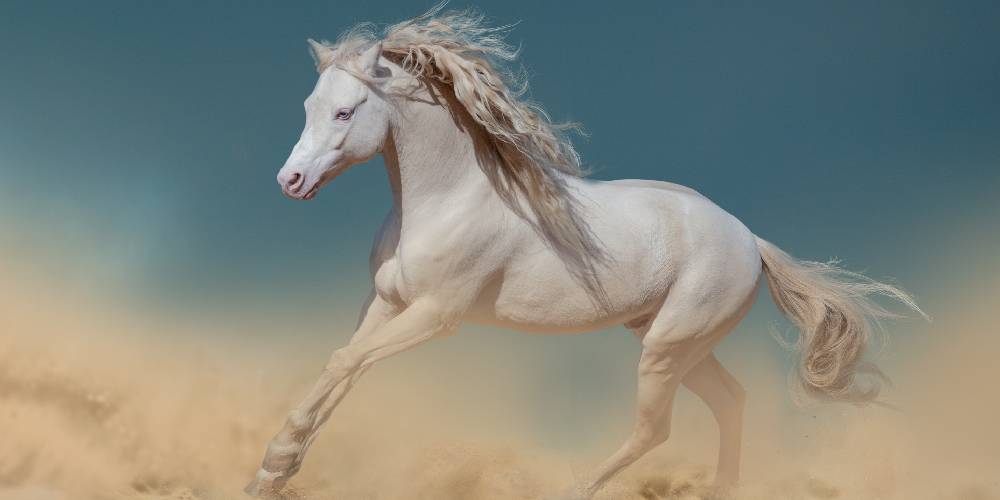You may have seen horses in may colors ranging from black, to brown, to white, and even to gold. But some coat colors are so rare that only a few horses in the world are seen in those colors.
These are the rarest and most uncommonly seen coat colors that horses can have.
The 5 Rarest Coat Colors Seen In Horses:
The 5 rarest coat colors seen in horses include the following:
Now, lets go into a little more detail about what these coat colors look like and what they’re all about!
True White:

Most people who aren’t really in the horse world may think that a grey horse is a white horse, but this is not the case. Most horses who appear white are actually known as grey because they have dark skin, and they are born a dark color before eventually lightening and whitening as time goes by.
A true white horse or an albino horse is a horse that has a completely white coat, pink skin, a white mane and tail, and pale eyes. White horses are often confused with grey horses as both have white coats. The difference is that a grey horse has black skin while a white horse has pink skin or skin that lacks pigmentation. Albinism is likely caused by two copies of a dilution gene inherited from each of the horse’s parents. Because of this, albino horses/true white horses must inherit their coloration from their parents.
True white horses have some very special traits that make them identifiable as the color they are. True white horses have:
- A pure white coat
- Pale blue, green, pink, or white eyes
- A white mane and tail
- White or pink hooves
- Pink skin with no mottling or additional pigmentation
Believe it or not, white or albino is actually classified as the most rare color seen in the horse world. This is because not only do many breeds not allow this color, but the genetics and breeding for this color is not common either.
Brindle:
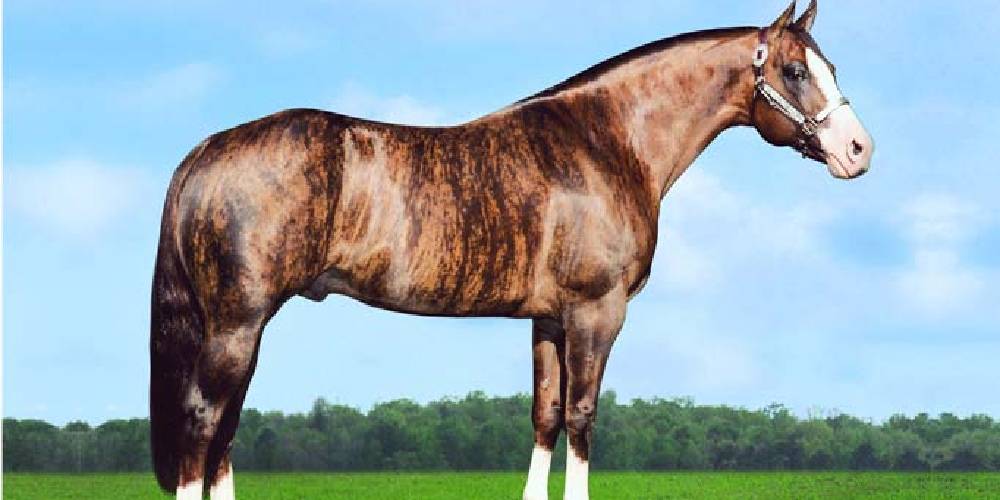
Brindle horses are so rare that many breed associations and people in the horse world don’t even know that these horses exist.
Brindle is a coat pattern that is only seen in a select few horses throughout the world. This coloration often is caused by something known as spontaneous chimerism. This genetic condition causes the horse to have two different sets of DNA which then can cause stripes of another coat color to appear in their coat.
This genetic condition has been seen in may different breeds, but because brindle is not a standard coat color, many breeds do not recognize this coloration in their registry and these horses may not be able to be registered.
The breeds that this condition has been seen in include:
- Mustangs
- Arabians
- Thoroughbreds
- Tennessee Walking Horses
- German Warmbloods
- Bavarian Warmbloods
- Andalusians (and other Spanish Breeds)
- Orlov Trotters (and other Russian Breeds)
- Donkeys
- Mules
- Hinnies
The striping can occur in any coat color seen in horses. You may see a brindle horse with a chesnut coat color but black hairs in the mane and tail as well as dark brown striping across the body. That coloration could be between a chestnut and a bay horse where the spontaneous chimerism occurred.
Cremello
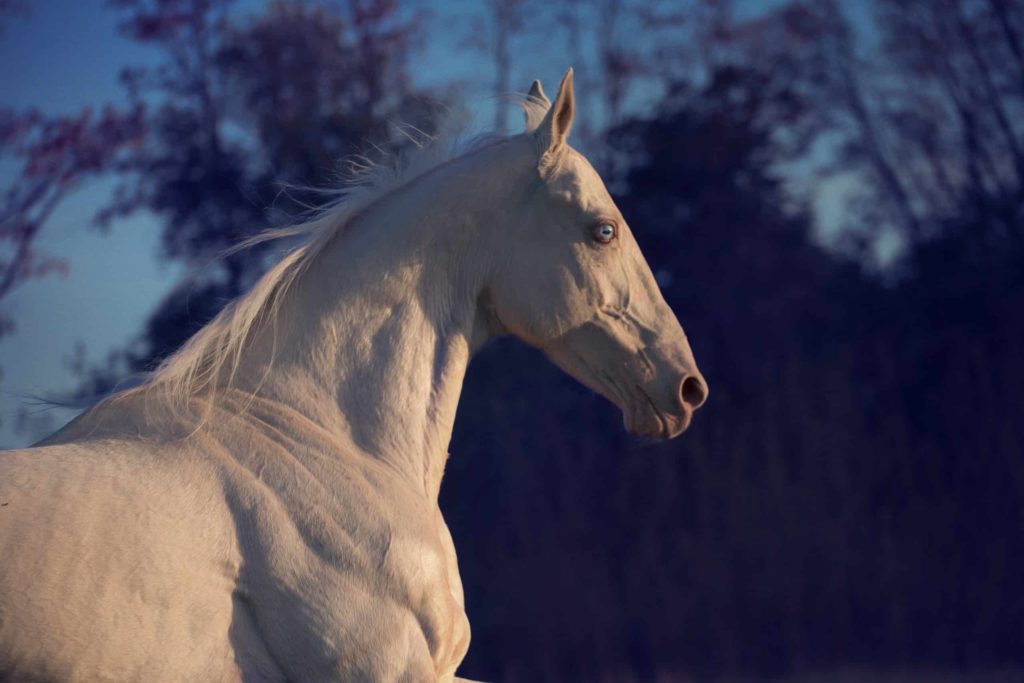
Cremello is a rare horse coat color seen in only a few breeds around the world. This color is caused by two copies of a creme gene in a chestnut horse which dilutes the color immensely. These horses have a white mane and tail, a creme or golden-colored body, pink skin, and blue eyes. A cremello horse is not considered to be albino as there is still pigmentation in their skin and coat. This coat color is extremely rare and is primarily seen in Akhal-Teke horses. Cremello is a color, NOT a breed.
A horse can be officially considered Cremello only by looking at its genetics. If the horse has chestnut as its base color with two copies of creme genes diluting their color, it can officially be considered a Cremello. The reason genetic testing should be done is that some Palomino horses are really light in color and some albino horses can have a slight beige tint to their coat and can be mistaken for a Cremello horse.
There are several traits and features that these horses carry that make them the color they are. These are the identifying traits that the cremello horse carries:
- Pale Golden Coat
- White Mane and Tail
- Pink Skin
- Pale Blue, White, or Pink Eyes
- 2 copies of a dilution gene known as a cream gene
- A chestnut base color
Cremello horses are extremely rare and fall just below albino horses on the rarest horse color scale. There are only a few breeds that will even allow this coat color.
The breeds that allow the cremello coloration include:
- Mustangs
- Andalusians
- Akhal-Tekes
- Quarter Horses
- Brumbys
- Lusitanos
- Oldenburgs
- Saddlebreds
- Falabellas
- Czech Warmbloods
These beautiful horses are a rare sight to see. With only a limited number of them in the world, cremello is a prized color that never goes unnoticed.
Perlino
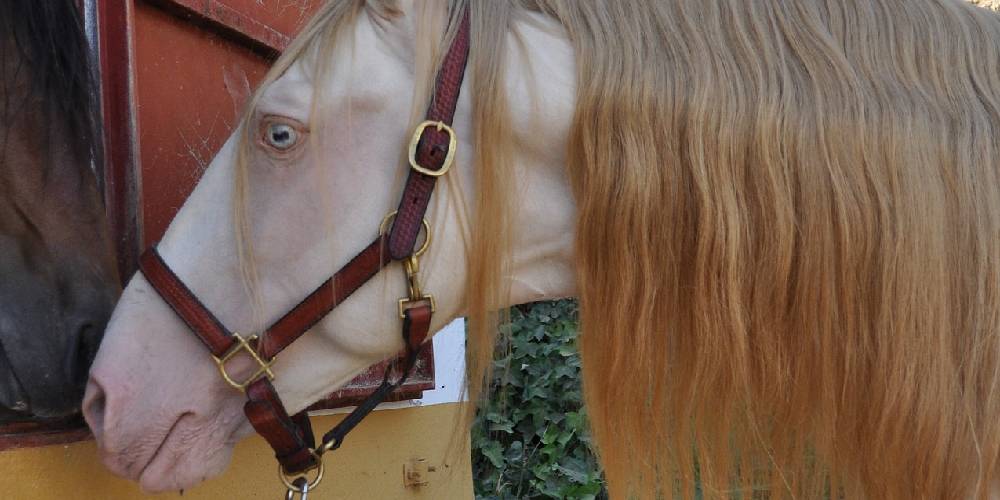
Perlino is a coat color caused by the influence of two copies of the creme gene in a bay horse. This color shows off a golden or creme-colored coat with a red-orange mane similar to that seen in a chestnut horse. Because of the pigment dilution caused by the creme gene, Perlino horses often have blue, white, or pale-colored eyes as well as pink skin all over their bodies. The most common breeds to carry this coloring is the Akhal-Teke horse and the Andalusian. Remember, Perlino is a color and NOT a breed.
The Perlino horse has some very specific traits that make it so identifiable. These traits include:
- Pink skin
- Pale eyes (pink, blue, or white)
- Orange or chestnut colored mane and tail
- Genetics for the bay coat color
- Two copies of the dilution gene known as the cream gene
- Pale golden coat
These horses are often mistaken for Cremello horses because they look so similar! The main way to tell these horses apart genetically is to see if they carry the genetics of a bay horse or of a chestnut horse. if one of these horses has the genetics of a bay horse they are a Perlino and of they carry the genetics of a chestnut horse they are a Cremello.
Telling these horses apart by their physical appearance can be tricky, especially because the color of their coats is almost the same. The main way to tell them apart is by the color of their manes and tails. the mane and tail of a Cremello horse will be white while the mane and tail of a Perlino will be an orange-red color.
These exquisite golden horses are definitely show stoppers. They are hard to find making them true treasures.
Chocolate Palomino
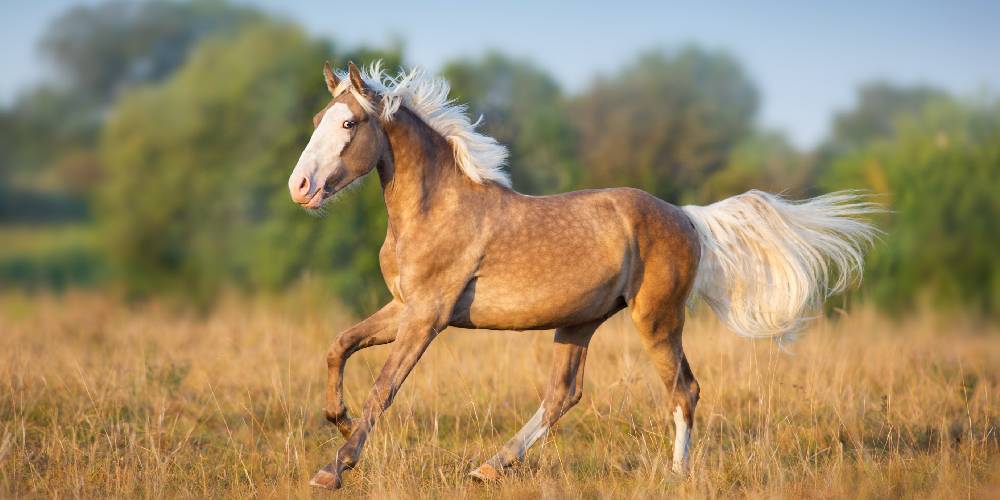
The chocolate palomino coat color is definitely a rare sight to see. This specific palomino coat color is just a sort of subcategory of the palomino coat color.
This coat color contains the same chestnut base and cream gene genetics as that of a standard Palomino, but the color of their coat is what is different. Chocolate Palomino horses have a really dark coat color and a white mane and tail making them look similar to a liver chestnut horse with a flaxen mane and tail. This coat color is produced through the crossing of a cream-gene-carrying horse and a liver chestnut horse. This is why these horses are so dark.
The identifiable traits these horses carry that make them easy to point out from other colors include these:
- Chocolatey brown coat color
- Dark skin
- White mane and tail
- Brown or amber colored eyes (unless pale due to a white marking covering the eye)
- They have the base genetics of a dark liver chestnut coat color
- Their coat color is diluted by one copy of a diluting cream gene
These beautiful horses are of the rarest horses in the world and are the rarest shade found in the Palomino family.

